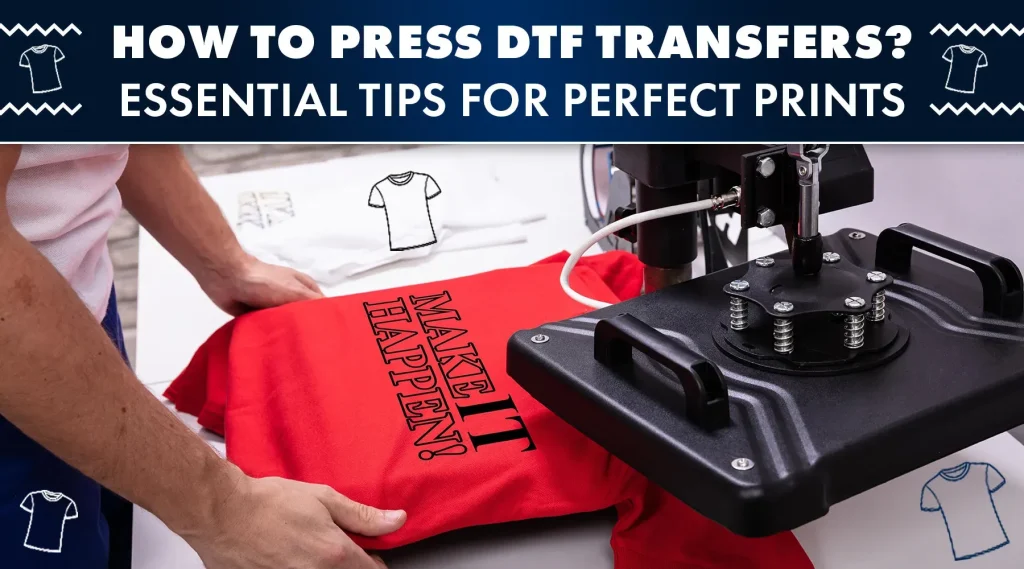Perfecting DTF Transfers is essential for anyone looking to create stunning and vibrant designs on fabrics. As DTF printing becomes increasingly popular among custom apparel creators, mastering the nuances of this technique can set you apart from the competition. By focusing on high-quality DTF inks and understanding the DTF transfer process, you can achieve impeccable results that will endure over time. In this article, we’ll delve into DTF printing tips that will enhance your transfer application, ensuring your final product reflects your creative vision. Get ready to elevate your projects with these invaluable insights!
In the realm of custom garment decoration, mastering the art of direct-to-film printing is crucial for achieving vibrant fabric designs. This innovative transfer application method allows users to print eye-catching graphics that adhere well to various textiles. By utilizing superior resources, such as high-quality inks and specialized films, creators can ensure that their prints are not only visually striking but also enduring. In this guide, we will cover actionable strategies for refining your DTF transfer techniques, providing you with the knowledge needed to produce professional-looking results. Prepare to transform your apparel customization with our expert advice!
Understanding the DTF Transfer Process
DTF (Direct to Film) printing is revolutionizing the way we approach custom apparel. Understanding the DTF transfer process is essential for anyone looking to elevate their garment design skills. At its core, DTF printing involves printing designs onto a specially coated film that possesses the unique ability to bond with textiles when heat is applied. This technology not only allows for vibrant designs but also enhances the durability of prints on various fabric types, making it a reliable choice for both small-scale and large-scale production.
The DTF transfer process begins with high-quality digital designs that are printed onto the transfer film using specialized DTF inks. These inks offer vivid colors and excellent washability, crucial for maintaining design integrity over time. After printing, the film is sprinkled with adhesive powders and then cured, which prepares it for the heat transfer application. This multi-step process, while straightforward, requires attention to detail to avoid common pitfalls that can affect the final product’s quality.
Choosing Quality Materials for DTF Printing
To achieve outstanding results in DTF printing, selecting quality materials is paramount. This starts with choosing high-quality DTF films specifically designed for the demands of textile printing. Poorly made films can lead to several issues, including poor adhesion, cracking, or even fading of the printed designs. Furthermore, ensuring compatibility between your selected film and your printer’s specifications is crucial, as this can drastically reduce errors and the need for repeated print runs.
In addition to film, using high-quality DTF inks is just as important. These inks are formulated to produce vibrant, long-lasting colors while providing excellent adhesion to the film and fabric. Investing in reputable brands for inks not only guarantees better results but also enhances the longevity of your prints, ensuring they withstand multiple washes without losing their luster.
Optimizing Printer Settings for DTF Success
One often overlooked aspect of DTF printing is the importance of optimizing your printer settings to achieve the best possible results. Before starting a print job, it’s vital to ensure that the printer resolution is set to a minimum of 1200 DPI. This high-resolution setting will capture intricate details in your designs, resulting in sharper images that stand out after the transfer process is complete. Misconfigured settings could lead to blurry prints, which can be very disappointing.
Furthermore, configuring the correct color mode is essential to eliminate issues like color bleeding. Most DTF printing should be done in CMYK mode, ensuring accurate color reproduction. Additionally, adjusting the ink saturation levels can prevent over-saturation during the printing process, which may otherwise lead to bleeding or smudged designs during heat application. Taking the time to perform these adjustments will greatly enhance your overall transfer quality.
Mastering Preheat Techniques for DTF Transfers
Preheating your garments before applying DTF transfers is a step that should never be skipped. It may seem minor, but this procedure is critical as it prepares the fabric for optimal adhesion. Preheating typically involves setting your heat press to the right temperature, usually between 320°F and 350°F. This range enables the adhesive on the transfer to activate properly, creating a strong bond with the fabric that can withstand washing and wear.
Additionally, it’s beneficial to pre-press the garment for a few seconds. This helps eliminate moisture and removes any wrinkles that may interfere with the adhesion process during transfer. By investing just a short time in these preheat techniques, you can significantly improve the quality and durability of your DTF transfers.
Application Techniques for Flawless DTF Transfers
The success of DTF transfers significantly hinges on mastering proper application techniques. When it’s time to transfer the film onto the fabric, using a heat press with even pressure across the design is essential. This step typically requires applying the heat for approximately 10 to 15 seconds. Consistent pressure ensures that every part of the transfer adheres to the garment uniformly, preventing any peeling or lifting of the design.
Another critical aspect of the application process is allowing the transfer to cool completely before peeling off the film. This waiting period can be tempting to skip, but doing so may lead to undesired results, including smudging or lifting of the print. Taking these extra steps in application will lead to a more polished final product, giving your prints a professional finish that impresses and passes the test of time.
Caring for Your DTF Printed Garments
After successfully completing your DTF transfer, proper care of the printed garments is essential to maintain their vibrant appearance and longevity. To prolong the life of your designs, always wash printed items inside out in cold water. This practice protects the print from friction and fading caused by direct contact with the washing machine drum. Avoiding bleach and using mild detergents can also contribute to the durability of the prints.
Furthermore, when drying your DTF printed garments, it’s advisable to opt for air drying whenever possible. If you must use a dryer, select a low heat setting, which will minimize the risk of heat damage to the print. Educating customers on these care tips not only helps maintain the quality of their garments but also enhances customer satisfaction and encourages repeat business in your DTF printing venture.
Frequently Asked Questions
What are the key tips for perfecting DTF transfers?
To perfect your DTF transfers, focus on five key areas: choosing high-quality DTF film, using premium DTF inks, optimizing your printer settings, preheating the transfer area properly, and mastering your application technique. Each of these steps plays a crucial role in achieving vibrant and lasting results.
How do high-quality DTF inks impact the transfer process?
High-quality DTF inks are essential for creating vibrant prints that withstand multiple washes. These inks ensure that your designs remain bright and true to color over time, enhancing the overall quality of your DTF transfer process.
What is the ideal temperature for applying DTF transfers?
The optimal temperature for the DTF transfer application is typically between 320°F to 350°F (160°C to 180°C). Preheating the heat press to this temperature ensures effective adhesion of the transfer to the fabric.
Why is it important to adjust printer settings for DTF printing?
Adjusting printer settings, such as resolution and color mode, is crucial for DTF printing. A high resolution (1200 DPI) captures sharp details, while setting the printer to CMYK mode prevents color bleeding, leading to better overall results.
What should I do to maintain the quality of my DTF transfers after application?
To maintain the quality of your DTF transfers, advise customers to wash printed garments inside out in cold water and avoid using bleach. This care ensures that designs remain vibrant and intact for a longer time.
Can improper application techniques affect DTF transfer quality?
Yes, using improper application techniques can significantly affect the quality of your DTF transfers. Applying uneven pressure or peeling the film too soon can result in lifting or smudging, compromising the final appearance of your design.
| Tip | Details |
|---|---|
| Choose the Right Film | Select high-quality DTF film compatible with your printer to prevent issues with adhesion and color vibrancy. |
| Use High-Quality Inks | Opt for DTF inks that are vibrant and durable to ensure prints remain true to color after washing. |
| Adjust Printer Settings | Set your printer to high resolution (1200 DPI) and ensure you are using the correct color mode (CMYK) to avoid color bleeding. |
| Preheat the Transfer | Preheat the heat press to 320°F to 350°F (160°C to 180°C) and pre-press the garment to eliminate moisture. |
| Proper Application Technique | Apply even pressure for 10-15 seconds and allow the transfer to cool before peeling to prevent smudging. |
Summary
Perfecting DTF transfers requires a deep understanding of various elements involved in the process, from choosing the right materials to employing effective application techniques. The five crucial tips highlighted—selecting high-quality films and inks, adjusting printer settings, preheating transfers, and mastering application techniques—are essential to creating vivid and durable designs that withstand the test of time. By diligently following these steps, you not only improve the quality of your DTF prints but also enhance the satisfaction of your customers and grow your skills in this exciting field of printing.



